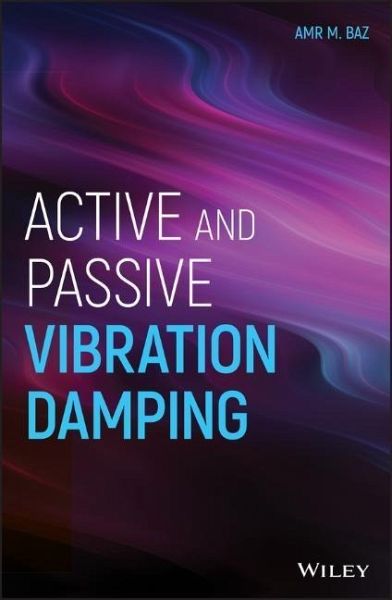
Active and Passive Vibration Damping
Versandkostenfrei!
Versandfertig in über 4 Wochen
131,99 €
inkl. MwSt.
Weitere Ausgaben:

PAYBACK Punkte
66 °P sammeln!
An important work presenting in one volume the application of viscoelastic damping materials to control vibration and noise of structures, machinery, and vehicles Focuses primarily on the application of passive as well as actively treated viscoelastic damping materials to control vibration and noise of structures, machinery, and vehicles. Emphasis is placed on presenting the basic principles and potential applications of passive and active vibration damping technologies. The presentation encompasses a mix between the associated physical fundamentals, governing theories and optimal design strategies of various configurations of vibration damping treatments. Utilization of the smart materials to augment the vibration damping of passive treatments is the common thread which is pursued, in depth, among all the chapters of the book. This book is divided into two parts, the first dealing with materials theory and the second dealing with the practical application to vibrations. It presents the basics of various damping effective treatments such as constrained layers, shunted piezoelectric treatments, electromagnetic and shape memory fibers. Classical aspects of viscoelastic materials models are also analyzed from the experimental characterization of the material coefficients as well as their modeling. New models such as Golla-Hughes-McTavish (GHM ) model, augmented temperature field (ATF) model, fractional derivatives (FD) models. Modal strain energy (MSE) models are also deeply analyzed. Part II of the book is devoted to the detailed descriptions of advanced damping treatments using all the fundamentals presented in Part I. Each chapter of the book ends with a number of problems that cover the different aspects of theoretical analysis, design, and applications of vibration damping technologies. The book has a large number of numerical examples to reinforce the understanding of the theories covered, providing the means for exercising the knowledge gained, and emphasizing the learning of strategies for the design and application of active and passive vibration damping systems. The examples are supported by a set of MATLAB software modules to enable the designers of vibration damping systems to extend the theories presented to various applications. * Written by an internationally recognized authority and pioneer, it summarizes and presents comprehensive coverage in one volume material that until now appears throughout a selection of references * Presents a mix of the associated physical fundamentals, governing theories and optimal design strategies of various configurations of vibration damping treatments, a comprehensive coverage not available elsewhere * With companion website including MATLAB software, solutions to all problems, and power point slides, the supporting tools enable hands-on experience of the analysis, design, optimization, and application to a wide range of situations
A guide to the application of viscoelastic damping materials to control vibration and noise of structures, machinery, and vehicles Active and Passive Vibration Damping is a practical guide to the application of passive as well as actively treated viscoelastic damping materials to control vibration and noise of structures, machinery and vehicles. The author -- a noted expert on the topic -- presents the basic principles and reviews the potential applications of passive and active vibration damping technologies. The text presents a combination of the associated physical fundamentals, governing theories and the optimal design strategies of various configurations of vibration damping treatments. The text presents the basics of various damping effective treatments such as constrained layers, shunted piezoelectric treatments, electromagnetic and shape memory fibers. Classical and new models are included as well as aspects of viscoelastic materials models that are analyzed from the experimental characterization of the material coefficients as well as their modeling. The use of smart materials to augment the vibration damping of passive treatments is pursued in depth throughout the book. This vital guide: * Contains numerical examples that reinforce the understanding of the theories presented * Offers an authoritative text from an internationally recognized authority and pioneer on the subject * Presents, in one volume, comprehensive coverage of the topic that is not available elsewhere * Presents a mix of the associated physical fundamentals, governing theories and optimal design strategies of various configurations of vibration damping treatments Written for researchers in vibration damping and research, engineers in structural dynamics and practicing engineers, Active and Passive Vibration Damping offers a hands-on resource for applying passive as well as actively treated viscoelastic damping materials to control vibration and noise of structures, machinery and vehicles.



